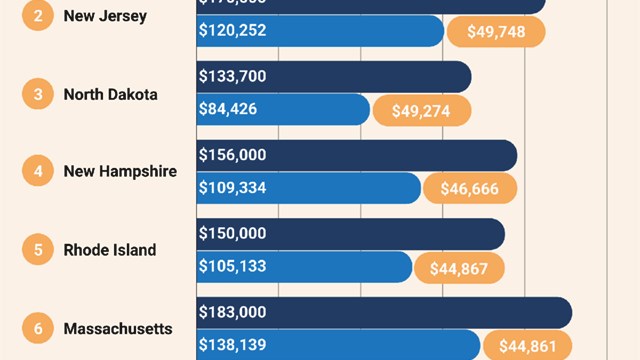Round-Up of 1999's
New York Real Estate Market
by Peter R. Marra, President of Willam B. May
By all accounts, 1999 was a banner year for New York real estate. On virtually all fronts, 1999 broke all previous records both in the market in general, and here at William B. May. Prices at every level have increased. Large apartments were in the biggest demand and were being bid up incredibly; townhouses sold in record quantities; new construction, especially of larger units hasn’t been able to keep up with demand; the popularity of one-bedrooms reached an all-time high; and studios also increased in price dramatically, in some cases doubling what they might have sold for just two years previously.
Why? The economy has been doing fabulously; Wall Street is full speed ahead; the dot coms are flush with investor dollars bursting with expectation; and consequently, New York is booming. And in this new economy, there doesn’t seem to be a lid – just when you think there’s a hiccup, Wall Street goes off the charts again.
Company-wise, 1999 was the year in which William B. May sold more large apartments, more townhouses, more studios and one bedrooms, at higher prices than in any previous year. Large apartments, 6 rooms or over were in the biggest demand, with our highest sale co-op weighing in at $13.5 million. We had an average of five buyers for each large prewar apartment we sold. 1999 marked the restructure of our townhouse division, which took off decisively — William B. May sold twice our usual number of properties in this category. In short, a great year.
1999 was a year in which the amount of money generated by Wall Street was so enormous that first-time buyers were walking in looking for six- and eight-room apartments, not three rooms. It was also a year in which increased mortgage rates neither affected the pace of sales, nor the price point at which people decided to buy. There was still plenty of dollars out there to borrow, and the extra money it took to carry the mortgage was not a deal-breaker. In fact, many buyers put down larger down-payments to help speed-up the transaction and facilitate the deal in one way or another.
The city itself expanded further in every direction. TriBeCa expanded with new condo conversions opening on its northern outskirts and new rental buildings such as TriBeCa Pointe opening on the very western edge. Chelsea is moving north and west, with hugely successful residential conversions such as the Chelsea Mercantile, and commercial re-uses such as Starrett Lehigh. People discovered new frontiers in order to find their ideal home.
Finally, the state of the market also had marked effects on the brokerage community — for example, it had the effect of separating the career brokers from the part-timers–gone were the days when a broker could come in for an hour or once a week and still get a deal done. The constant changes in the state of inventory meant that brokers had to know what was going on every second or they would lose the property they were negotiating on for their client. If you weren’t there, you couldn’t really keep up with the changes. And so we saw a shift from the "social" type of broker to the serious, committed career broker.
In the same way that there was a lot of pressure on the brokerage community to be on top of things constantly, there was an equal pressure on buyers to move fast. If they didn’t, another buyer was always waiting in the wings, and the original bidder would lose the deal. 1999 was the year to jump fast and to jump high.
The Emergence of Technology
by
Back in 1995 I barely knew what the Internet was. No one knew that it would do more than anything to change homebuying process since the classified ad. Our little website experiment called corcoran.com has grown bigger than The Corcoran Group itself! Today, it is the largest global luxury homebuying site in existence. That makes The Corcoran Group just a subscriber, like the more than 200 other subscribers corcoran.com expects to have by the end of the year. I feel like a proud mother.
Corcoran.com’s rapid growth is a sign of how fast technology has changed — taking our society right along with it. Real estate websites now solve every home-related problem that the typical person faces in a lifetime: moving to a new city, renting an apartment, buying your first place, fixing it up, furnishing it, selling it, buying a second home on the Costa del Sol and finding a retirement community in Arizona.…
But the Internet is more than just a new place to do things the old way. The Internet revolution has brought a tremendous amount of new investment to the real estate business. The short-term effects of this money can be summed up with the words recently spoken by a California-based web-entrepreneur: "We’ve been in business less than a year, we’re losing money hand over fist and yet I’m constantly approached by people wanting to buy stock."
In the long-term, this flood of money is transforming the way brokers work. By saving time, increasing economies of scale, reducing the need for face time and empowering the consumer, the Internet is likely to change all our job titles over the next few years.
Some experts say hybrid brokers are the future, in which consumers work with teams that include not just agents, but also processors and facilitators — sort of the Arthur Anderson approach. Others see the downfall of commissions, which would be dropped in favor of hourly rates or flat fees. If there’s one thing I can say for certain, it’s that no one can say for certain how the residential real estate business will evolve.
Is all this really important? How many people are buying online anyway? Well, there are as many estimates of the e-commerce market’s value as there are e-commerce consultants. The most commonly accepted projections say that anywhere from 256 million to 1 billion people are likely to be online in the near future. That leaves a pretty big margin of error. A more trusted estimate says that, across the board, two out of every five residential real estate transactions will be generated online this year. Expect all of these numbers to go up with time.
Here are some more facts: last year corcoran.com generated one out of every ten of The Corcoran Group’s $2 billion in transactions. The site made $1.5 million in net profits, which is more than amazon.com or just about any other online company. And the average home sold on corcoran.com went for nearly $550,000. Five years ago, when we founded corcoran.com, it did just a few deals. In half a decade, the Web has gone from Kansas to the Emerald Palace.
So what’s the future of Internet technology and homebuying? Globalism. The Web is so vast and reaches into homes and offices in so many places around the world that it makes parochialism obsolete. That’s why corcoran.com was transformed over the years. What started out as The Corcoran Group’s website is today the best and largest place for buying or selling luxury homes anywhere in the world – which pretty well sums up the current state of the technology revolution.
Tech Effects
Differences in the Selling Process
by
It wasn’t so long ago that most New York City real estate professionals disdained all electronic devices. Sage advice dictated that nothing would replace the face-to-face or voice-to-voice relationship between buyer and broker and seller and broker. Many resisted company-wide voice mail, thinking that a buyer would hang up when confronted with a machine, or that with competition so stiff, he or she would keep calling until someone in the office picked up the phone.
Today there are still buyers who will continue their dialing until they contact a bona fide agent that is willing to listen. Nevertheless, the impact of voice mail and other technological advances on the real estate industry is immeasurable.
Being reachable has never been more important than now. We are living in a "want it fast, want it now " culture. Since accessibility is key, cell phones, beepers, pagers and e-mail are the new tools of the trade. Yet one can feel the resistance, especially amongst agents who have been in the business 15 years or more. Technology is affecting their business and personal lives in ways never dreamed of only six years ago. Whereas it used to be deemed rude to roam the streets of Manhattan talking on the phone, now it is judged rude not to have a phone because a customer or client may not be able to reach you.
The expression "you can run, but you cannot hide" was never truer than today. Most agents have two regular phones, each equipped with an answering machine, a cell phone with voice mail, and at least one e-mail address. Information is being processed mentally, visually, and orally in such an intense fashion that agents need to program time for relaxation now more than ever. We have taken a technology leap that has given us the possibility to be more effective and more communicative, but our agents need to take the leap in the learning curve. Training on the computer, the phones and with personal digital assistants (PDA’s) is crucial for survival.
But it is perhaps the Internet more than any other advance that has profoundly impacted the way brokers sell. There are agencies across the country that are finding that Internet buyers are their largest source of business. The National Association of Realtors asserts that nationally 23 percent of the potential homebuyers are looking for homes online, and in the New York City metropolitan area that number may be even greater. This statistic signals that buyers have higher expectations of real estate agents than they ever have before. They are looking for improvement of services, short-cuts to identifying a home, and a faster buying process.
The various residential websites are seeking to meet the high demand with listings displayed in a variety of visual ways to help pre-sell properties. Douglas Elliman currently uses IPIX tours, 360-degree views of properties, elaborate show sheets, maps, and virtual tours, all providing a wealth of information to customers and clients. The brokers who cannot supply these "selling features" will be playing catch-up in this next period in order to stay afloat.
There has been much talk about disintermediation, the act of cutting out the middleman, in this case the real estate agent. We have seen the online auctions of properties from coast to coast. The board interview process in New York City has kept the auctions from taking off here, but brokers should recognize the efficiency of this process and be prepared for it. Many of the present property auction sites are utilizing agents because there still needs to be "hands-on" professionals who can show a property, negotiate a deal and complete the transaction. Third party transactions and fees for services will all impact the real estate business in the future.
As a group, Manhattan brokerage firms must be attentive to the changing consumer profile – their needs, their wants, and their technological demands – and develop programs to meet them. The new technology compliments, rather than supplants, the traditional methods of selling, but the firms and their agents need to respond to the new methodology. This will ensure that the relationship between agents and their customers and clients remains strong in the future.
A New Millennium
or More of the Same?
by
In the final years of the 20th Century, buyers of Manhattan residential real estate faced the Herculean task of facing the capital gains tax law, which eliminated the "rollover" of capital gains from the sale of one primary residence to the purpose of another, severely constricted the transfer of properties in the high-end, upscale Manhattan market. The resulting shortage of product, coupled with booming equity markets and abundance of available funds, has brought about the most competitive market for housing in this area since the World War II era.
The dawn of the new millennium has only confirmed this trend, as the high demand for–and meager supply of–Manhattan luxury housing continues in all size and price categories, from the smallest studio to the grandest mansion. For those properties that do become available, there are numerous potential purchasers lying in wait to make handsome offers. Multiple bidders and even bidding auctions have fast become more the norm than the exception.
The question remains: What does the balance of the year 2000 hold? Will prices continue their upward spiral? Should buyers wait for a market correction, or jump into the market now?
Short of a major stock market correction or other financial catastrophe, the availability of product is unlikely to change much from what we’ve been witnessing recently. Construction of new residential units is hampered by the lack of appropriate locations in which to build. (Witness the upscale gentrification that’s now happening in such unlikely neighborhoods of the city as the Lower East Side, Hell’s Kitchen and Harlem.) With the few new projects that are introduced to the buying public, there’s a frenzy to purchase, and many of these "sell out" long before the building is constructed.
These owners who decide to sell are aware of these realities, and consequently set asking prices over and above comparable sales which preceded theirs. And buyers are paying those prices, rather than waiting to see what the next round will bring.
For potential buyers, this requires raising their financial sights in order to find the property of their dreams. For those who can’t do so, some compromise is in order. Downscaling size and/or lessening neighborhood requirements is often the remedy. A family in a two-bedroom apartment with two children, who are looking for four bedrooms in a better neighborhood, might have to stay in their current neighborhood and/or settle for a three-bedroom apartment. Or, if four bedrooms are essential, they may need to choose a less fashionable neighborhood to meet their size requirement at a price they can still afford.
With such a competitive market, co-op boards are carefully screening people who may have "financially over-extended" to buy the apartment. Financial requirements for co-op buyers–which have always been hefty–are even more stringent in today’s market. Sellers are often requesting their brokers to provide them with a financial "prescreening" of potential buyers before accepting an offer. In addition, condo boards are increasingly requiring full co-op board-type presentations prior to purchase. Though they cannot turn down applications as readily, they do possess the ability to exercise their right of first refusal and find another buyer on equivalent terms within a short period of time. Although I’ve rarely seen this happen, the fact that purchase requirements in many condos are now scrutinized as carefully as co-ops is becoming widely accepted among Manhattan condo buyers.
Mortgages, which have always been integral to the purchase of apartments and houses in New York, continue to remain important. But where are the multiple bidders, sellers are opting for a "sure deal" rather than one that hinges on a buyer qualifying for financing. So, the bulk of buyers in the Manhattan market are now willing to sign contracts of sale which are not contingent on financing. And in some cases, banks and mortgage brokers now provide a buyer with bank loan commitments prior to the buyer even finding a purchase.
I would have to say that the "new millennium" in Manhattan residential real estate began even before the calendars changed over to the year 2000! The fast-paced, competitive market of recent years–covering all areas of property sales and rentals–appears likely to continue throughout the current year.






Leave a Comment